Books have the power to transport us to different worlds, teach us valuable lessons, and evoke profound emotions. Books have an extraordinary ability to whisk us away to various realms, presenting not just imaginative landscapes but also lessons about life, love, struggle, and humanity. In this article, we explore the top 20 famous books and their renowned authors, celebrating literary masterpieces that have stood the test of time.
 Pin
Pin Image by Pexels from Pixabay
Table of Contents
1. "1984" by George Orwell
 Pin
Pin Image from Reddit
Imagine a world stripped of truth, where every thought is monitored and individuality is a crime. George Orwell’s “1984” paints a chilling portrait of a dystopian future, set in a totalitarian regime led by the Party and its enigmatic leader, Big Brother. In this bleak landscape, the omnipresent telescreens beam propaganda while citizens are watched relentlessly, illustrating the terrifying extent of surveillance. Privacy is a fantasy, and even the smallest dissenting thought can lead to ruin.
The protagonist, Winston Smith, works at the Ministry of Truth, altering historical records to fit the Party’s narrative. His struggle for personal freedom and connection drives the story, leading him to question everything he’s known. The novel delves deep into the mechanics of oppression, propaganda, and language manipulation—”Newspeak” serves as a tool to limit thought and expression. Orwell’s exploration of totalitarianism resonates profoundly today, urging readers to reflect on their own societal structures. The chilling concepts of doublethink and memory holes haunt the mind, as Orwell warns us against complacency. “1984” is not merely fiction; it’s a prescient warning about the potential for government overreach and the loss of personal liberties.
2. "To Kill a Mockingbird" by Harper Lee
 Pin
Pin Image by Helena Gomes from Medium
Harper Lee’s “To Kill a Mockingbird” masterfully navigates the complexities of childhood innocence and the harsh realities of racial injustice. Set in the 1930s in the fictional town of Maycomb, Alabama, it is narrated by young Scout Finch, whose perceptions evolve against the backdrop of deep-seated prejudices. With her brother Jem and their friend Dill, Scout embarks on adventures that intertwine their innocent games with the grim realities of their community.
The story’s heart lies in the moral conviction of Atticus Finch, Scout’s father, a principled lawyer defending Tom Robinson, a Black man falsely accused of raping a white woman. Lee poignantly depicts the injustice and cruelty of racial discrimination while showcasing the indomitable spirit of morality and empathy. Through the children’s eyes, we witness the events that challenge their naivety and shape their understanding of human nature.
The rich characterization, coupled with vivid Southern imagery, draws readers into a world where compassion and prejudice collide. The themes of racism, loss of innocence, and moral courage resonate deeply, making the novel a timeless staple in discussions about equality and justice. “To Kill a Mockingbird” remains a crucial narrative, urging us to confront our biases and advocate for a more just society.
3. "Pride and Prejudice" by Jane Austen
 Pin
Pin Image from YouTube
“Pride and Prejudice” is a quintessential romantic novel published in 1813 that explores between love, societal norms, and personal integrity within the context of early 19th-century England. The story revolves around Elizabeth Bennet, one of five sisters in a family struggling for financial security through advantageous marriages.
At its core, the novel examines themes of love and mistaken first impressions, most notably through Elizabeth’s evolving relationship with the wealthy and proud Mr. Darcy. Initial prejudices and societal expectations create barriers between the characters, emphasizing the novel’s title. Austen adeptly critiques the class distinctions of her time, portraying how social status affects relationships and personal value.
The dialogue is filled with wit and irony, revealing character motivations and societal critiques. Elizabeth’s character is particularly notable for her independence and sharp intellect, which challenge the traditional female roles of the era. The romantic entanglements of other characters, like Mr. Collins and Charlotte Lucas, further emphasize the varying attitudes towards marriage and compatibility.
Notably, the book illuminates the societal pressure regarding reputation and the implications it carries for social mobility and personal happiness. Elizabeth’s eventual recognition of Darcy’s true character, counter to her initial judgments, underscores the themes of personal growth, understanding, and the complexity of human relationships.
4. "The Great Gatsby" by F. Scott Fitzgerald
 Pin
Pin Image from pangobooks
Published in 1925, “The Great Gatsby” stands as a profound critique of the American Dream during the Jazz Age, a time characterized by excess, glamour, and moral ambiguity. The narrative follows Nick Carraway, a Yale graduate and war veteran, who becomes embroiled in the extravagant world of Jay Gatsby, a mysterious millionaire famous for his lavish parties.
Gatsby, emblematic of aspiration and the quest for identity, is driven by his idealized love for Daisy Buchanan, a symbol of wealth and social status. Fitzgerald’s portrayal of Gatsby’s rise to riches juxtaposed with his unattainable dreams reveals the hollowness of the era’s opulence. This striking contrast serves as a commentary on the American Dream’s decay, as characters pursue wealth for superficial fulfillment, often leading to disillusionment and moral disarray.
Through vibrant descriptions and poignant symbolism, Fitzgerald captures the essence of the Roaring Twenties, depicting the rise of jazz music, flapper culture, and societal changes. The green light at the end of Daisy’s dock serves as a powerful motif of hope and the elusive nature of dreams, encapsulating Gatsby’s tragic pursuit.
Ultimately, “The Great Gatsby” is a timeless exploration of ambition, love, and the existential challenges of the American experience, leaving readers to ponder the true cost of success and the nature of happiness.
5. "Moby-Dick" by Herman Melville
 Pin
Pin Image from pangobooks
“Moby-Dick,” published in 1851, is regarded as one of the quintessential American novels. The story is narrated by Ishmael, who embarks on a whaling voyage aboard the Pequod, captained by the vengeful and monomaniacal Ahab. The narrative is more than just a whaling adventure; it is a profound exploration of obsession, revenge, and humanity’s relationship with nature and fate.
Captain Ahab’s relentless pursuit of Moby Dick, the elusive white whale, symbolizes various themes, including the struggle against the unknown and the devastating consequences of obsession. Ahab’s character becomes a powerful embodiment of hubris as he seeks vengeance against the whale that cost him his leg. Melville intricately incorporates detailed descriptions of whaling practices, the natural environment, and philosophical musings on existence.
Throughout the novel, Melville explores existential questions regarding fate, free will, and the limits of knowledge. The diverse cast of characters, such as Queequeg, Starbuck, and Pip, reflects various human experiences and responses to Ahab’s madness. Ultimately, “Moby-Dick” transcends the genre of adventure fiction, engaging readers in a profound dialogue about obsession, the nature of evil, and humanity’s place in the cosmos.
6. "War and Peace" by Leo Tolstoy
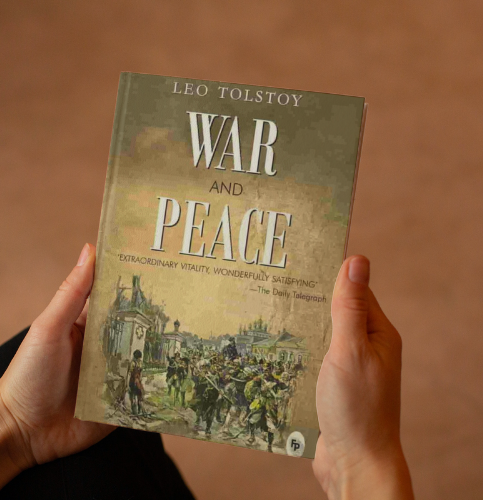 Pin
Pin Image from adorebooks
“War and Peace,” first published between 1865 and 1869, stands as one of the most important works of literature, weaving together historical narrative, philosophical discourse, and vivid character development. Tolstoy examines the effects of the Napoleonic Wars on Russian society through the lives of several aristocratic families, most notably the themes of love, loss, and the search for meaning amidst the chaos of war.
The novel is divided into four volumes and encompasses a large cast of characters, including Pierre Bezukhov, Prince Andrei Bolkonsky, and Natasha Rostova, who navigate personal challenges and societal expectations against the backdrop of a tumultuous era. Tolstoy’s meticulous attention to detail brings to life the battlefield, illustrating the horrors of war, while also revealing the emotional and psychological landscapes of his characters.
Tolstoy delves into profound philosophical questions about history, power, and the individual’s role within the larger narrative. He critiques the notion of great leaders as the architects of historical change, suggesting instead that history is shaped by the collective actions and decisions of ordinary people. The themes of fate, free will, and the search for happiness resonate throughout the novel, making “War and Peace” not only a significant historical portrayal but also a timeless exploration of human experience.
7. "The Catcher in the Rye" by J.D. Salinger
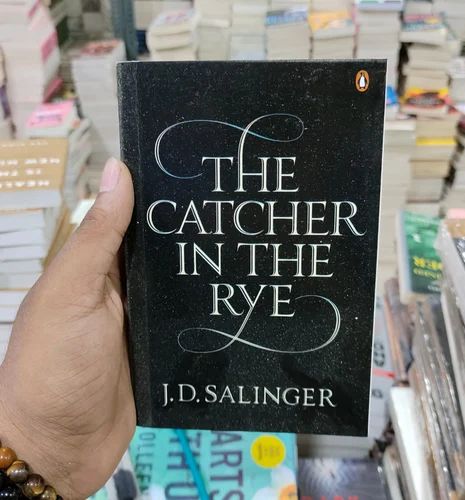 Pin
Pin Image from Indiamart
Published in 1951, “The Catcher in the Rye” explores the complex emotional terrain of adolescence through the eyes of its protagonist, Holden Caulfield. The novel opens with Holden narrating his experiences from a rest home, where he reflects on the events that led him there. His journey in New York City after being expelled from his prep school serves as both a physical and psychological odyssey. Holden is plagued with feelings of alienation, depression, and a longing for connection, common themes that resonate deeply with teenagers navigating their own identities.
Throughout the narrative, Salinger employs a conversational and colloquial tone, capturing Holden’s distinctive voice filled with cynicism and vulnerability. He exhibits a profound disdain for the “phoniness” of the adult world, creating an internal conflict between his childhood innocence and the harsh realities of adulthood he increasingly confronts. Significant encounters with various characters, including his younger sister Phoebe, highlight his protective instincts and desire to safeguard the innocence of youth, most poignantly symbolized in his fantasy of being “the catcher in the rye,” where he envisions himself saving children from falling into the corruption of adult life.
Holden’s psychological struggles also reflect broader societal issues of the 1950s, making the novel a timeless exploration of the complexities surrounding adolescence, mental health, and the quest for authenticity. The themes of loss, particularly in response to the death of his younger brother Allie, further deepen his character and underscore the impacts of grief on his psyche.
8. "Brave New World" by Aldous Huxley
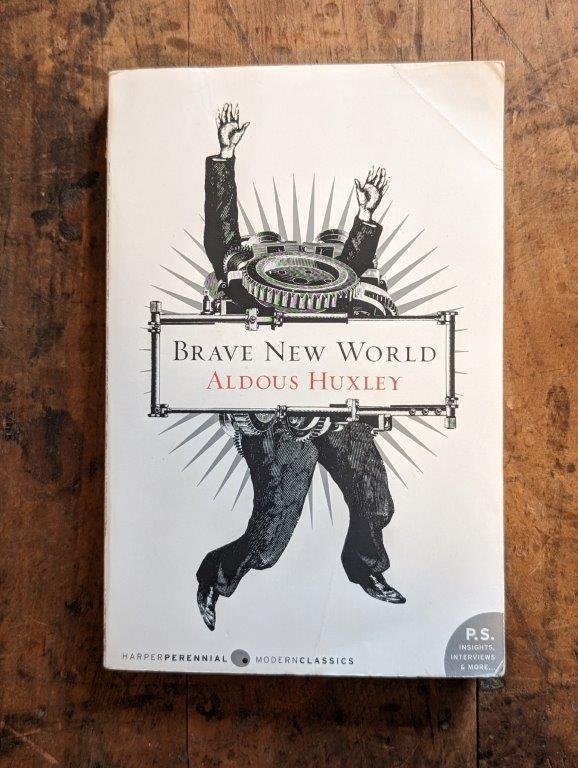 Pin
Pin Image from the vespiary
Aldous Huxley’s “Brave New World,” published in 1932, presents a chilling dystopian vision of a future characterized by extreme technological advancement and societal control. Set in a World State where happiness is mandated through the elimination of personal choice and individuality, the narrative critiques a society that prioritizes stability and conformity over human emotion and connection.
In this world, citizens are conditioned from infancy through genetic manipulation and psychological engineering. People are categorized into strict castes such as Alphas, Betas, Gammas, and Epsilon, each fulfilling predetermined roles in society. The widespread use of the drug soma provides an escape from discomfort and promotes compliance, dulling any sense of individuality or dissent.
Key characters like Bernard Marx and Lenina Crowne grapple with the constraints imposed by their society. Bernard’s discomfort with conformity leads him to question the value of a happiness built on artificiality, while Lenina embodies the conditioning that favors pleasure over deep relationships. The contrast between the sterile, hedonistic society and the savage culture on the fringes exposes the moral and philosophical dilemmas surrounding progress, free will, and the human condition.
Huxley’s foresight into the consequences of consumerism and technological domination resonates in contemporary discussions on ethics in technology and societal values, making “Brave New World” a critical and enduring critique of a possible future.
9. "The Lord of the Rings" by J.R.R. Tolkien
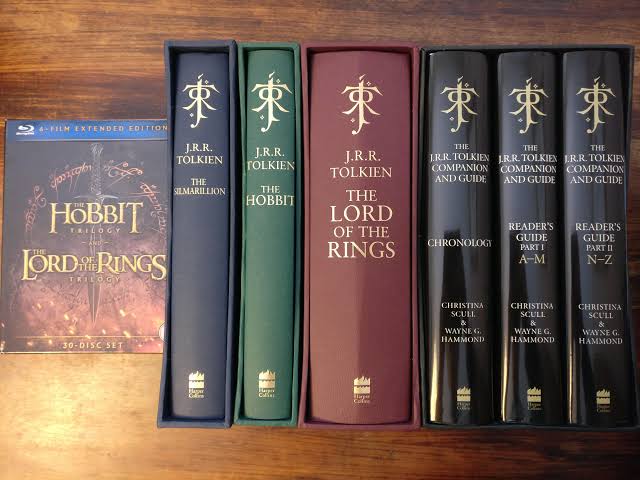 Pin
Pin Image from Imagemag
Published in three volumes between 1954 and 1955, “The Lord of the Rings” is a monumental work in the fantasy genre, set in the richly detailed world of Middle-earth. At the heart of the story is the One Ring, a powerful artifact created by the Dark Lord Sauron to dominate Middle-earth. The tale begins in the peaceful Shire, home to the hobbit Frodo Baggins, who inherits the Ring from his uncle Bilbo. Realizing the Ring’s true menace, Gandalf, a wizard, advises Frodo to set out on a perilous journey to destroy it in the fires of Mount Doom.
The narrative unfolds through a diverse ensemble of characters, including Aragorn, the rightful heir to the throne of Gondor; Legolas, an elven archer; Gimli, a dwarf warrior; and Samwise Gamgee, Frodo’s steadfast friend. Their quest involves battling formidable foes like Sauron’s ringwraiths and navigating the treacherous landscapes of Middle-earth, such as the Mines of Moria and the treacherous paths of Mordor.
Tolkien’s work is characterized by intricate character development and deep themes of friendship, sacrifice, and the eternal struggle between good and evil. The richly woven lore, including languages, histories, and cultures, adds unparalleled depth, captivating readers and inspiring countless adaptations in film, games, and more. Its impact on fantasy literature is monumental, establishing a blueprint for future authors and igniting the imaginations of generations.
10. "Crime and Punishment" by Fyodor Dostoevsky
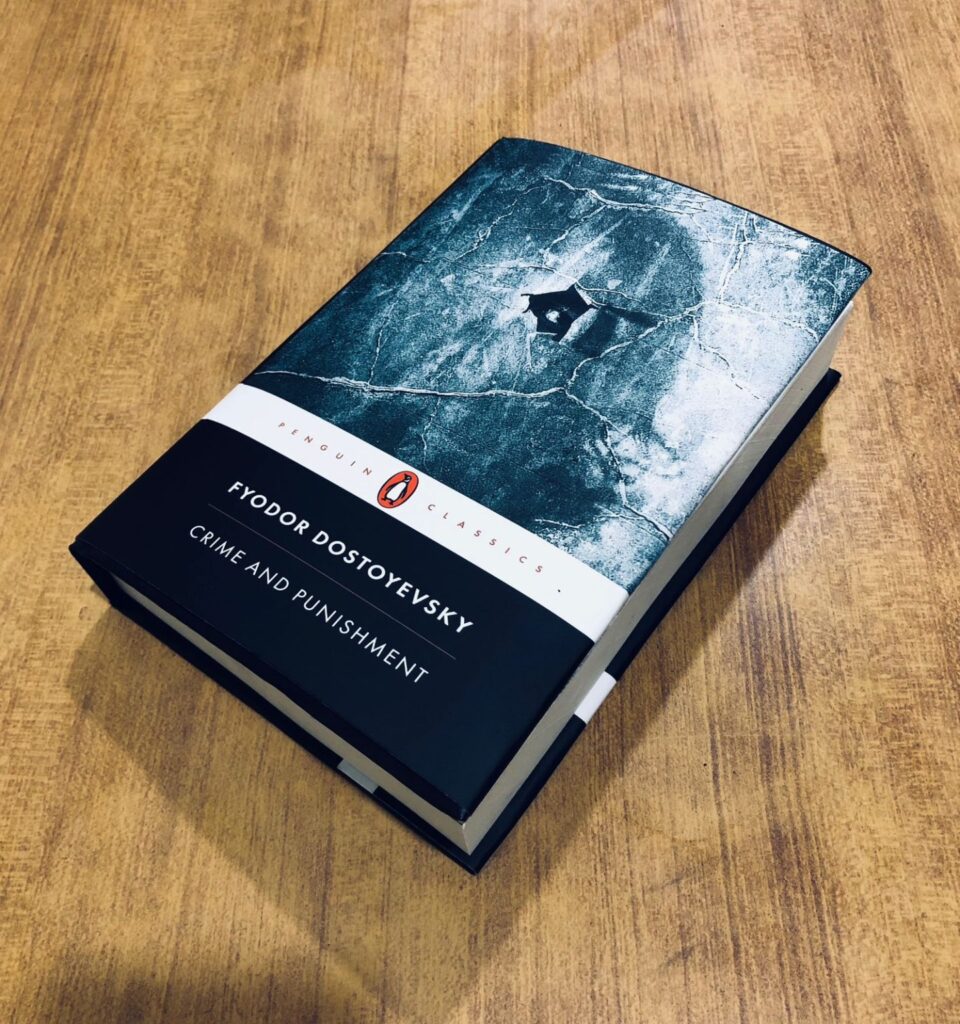 Pin
Pin Image from bookieleaks
Published in 1866, “Crime and Punishment” delves into the psychological turmoil of its protagonist, Rodion Raskolnikov, a former student living in impoverished conditions in St. Petersburg. Raskolnikov believes he is an “extraordinary man” who can transcend moral limits for a greater good. He commits an unthinkable act: the murder of a corrupt pawnbroker, Alyona Ivanovna, convinced that her death will benefit society.
Dostoevsky intricately portrays Raskolnikov’s inner conflict and the ensuing guilt, leading him to a torturous psychological spiral. The novel masterfully explores themes of morality, redemption, and existential struggle as Raskolnikov grapples with his justifications and the consequences of his actions.
Throughout the story, Raskolnikov encounters a gallery of compelling characters, such as the innocent and compassionate Sonia, who represents hope and redemption, and his conflicted friend Razumihin. The narrative unfolds against a backdrop of social injustices and philosophical debates, reflecting Dostoevsky’s keen insights into human nature and morality.
Ultimately, “Crime and Punishment” is not just a tale of crime, but a profound exploration of the human psyche, the weight of conscience, and the possibility of atonement. Its deep psychological and moral inquiries have made it a cornerstone of modern literature, resonating with readers across ages and cultures.
11. "The Picture of Dorian Gray" by Oscar Wilde
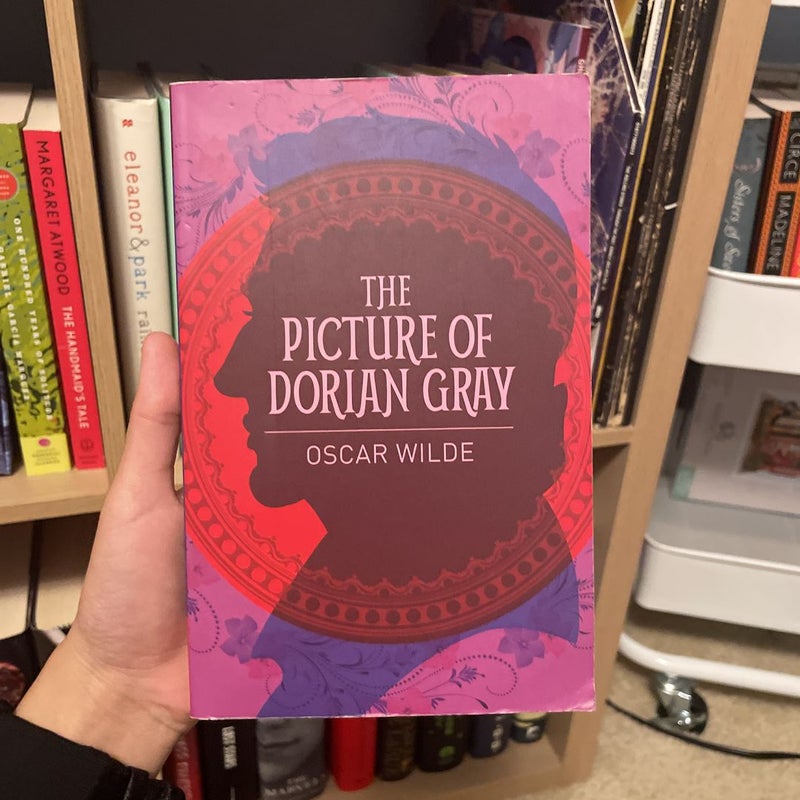 Pin
Pin Image from pangobooks
“The Picture of Dorian Gray,” published in 1890, is a haunting exploration of vanity, aestheticism, and moral decay. Oscar Wilde presents the character of Dorian Gray, a young man whose beauty captivates everyone around him. Following a chance encounter with the artist Basil Hallward, Dorian becomes the subject of a portrait that captures his youthful beauty. Influenced by Lord Henry Wotton, who advocates for hedonism and the idea that beauty is paramount, Dorian wishes for the painting to age instead of him, seeking a life free from the consequences of his actions.
As Dorian indulges in a life of excess and moral corruption, the portrait bears the scars of his sins, sharply contrasting his outward appearance. Wilde masterfully intertwines themes of duality—public façade versus private self—showing how Dorian’s relentless pursuit of pleasure leads him into a spiral of degradation. The novel critiques the superficiality of society and emphasizes the perils of placing aesthetic values above moral considerations. Ultimately, Dorian’s fate serves as a cautionary tale about the dangers of an unrestrained life, revealing how vanity and self-indulgence can lead to irrevocable consequences.
12. "The Alchemist" by Paulo Coelho
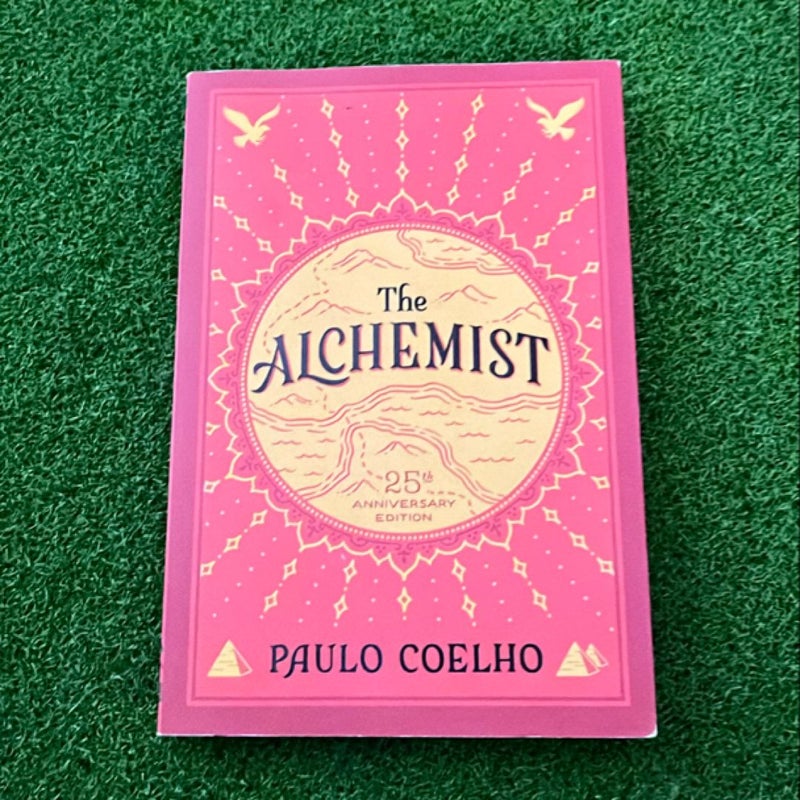 Pin
Pin Image from pangobooks
“The Alchemist,” first published in Portuguese in 1988, is a philosophical tale about self-discovery and pursuing one’s dreams. The story follows Santiago, a young shepherd in Andalusia, who dreams of discovering treasure in Egypt. Inspired by a recurring dream, he seeks out a gypsy fortune-teller who encourages him to follow his “Personal Legend,” a central theme in Coelho’s work that emphasizes the importance of listening to one’s heart and pursuing one’s passions.
Throughout his journey, Santiago encounters various mentors, including Melchizedek, the King of Salem, who teaches him about the Soul of the World and the interconnectedness of all things. Santiago’s quest takes him across the desert and introduces him to the complexities of love, sacrifice, and fate. The experiences he gathers reveal innate wisdom about the journey itself and the significance of following one’s dreams despite obstacles.
Coelho’s narrative highlights the idea that the pursuit of personal legends often involves overcoming fear and doubt. Santiago learns that true treasure lies not in material wealth but in the journey of self-discovery and the wisdom gained along the way. The novel resonates with readers by inspiring them to seek their own paths, reinforcing the belief that every person has a unique purpose waiting to be uncovered.
13. "Jane Eyre" by Charlotte Brontë
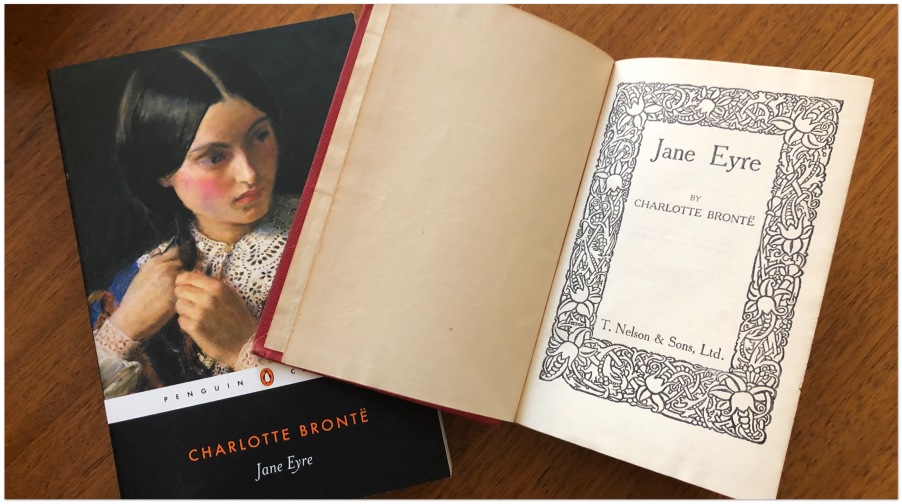 Pin
Pin Image from wordynerdbird
“Jane Eyre” is a profound narrative that centers on the life of its titular character, an orphaned girl who grows into a resilient woman. Brontë masterfully explores themes of love, morality, and social criticism, presenting a character who defies the era’s limitations placed on women.
The story begins with Jane’s traumatic childhood, marked by abuse and neglect at the hands of her aunt and cousins. Despite her hardships, Jane’s strong sense of self-worth propels her forward. She endures a harsh education at Lowood School, where she develops her moral convictions and thirst for knowledge. This experience informs her understanding of justice and empathy.
As an adult, Jane becomes a governess at Thornfield Hall, where she meets Mr. Rochester. Their complex relationship encapsulates themes of love that transcend societal norms. Jane challenges Rochester’s authority, ultimately seeking an equal partnership rather than submission. The novel delves into moral dilemmas, especially around love, independence, and the conflict between passion and principle.
Brontë’s critique of social hierarchies, particularly regarding gender and class, is evident throughout. Jane’s journey reflects the struggle for autonomy in a patriarchal society. The novel emphasizes the importance of integrity, self-respect, and the quest for a personal identity, resonating with readers even today. As Jane ultimately seeks a balance between love and independence, “Jane Eyre” remains a revolutionary tale about a woman’s quest for selfhood in a restrictive world.
14. "The Hobbit" by J.R.R. Tolkien
 Pin
Pin Image from littlebookbigstory
“The Hobbit” offers readers an enchanting journey through Middle-earth, introducing a variety of magical creatures and unforgettable characters. The story follows Bilbo Baggins, a seemingly unremarkable hobbit who is thrust into a grand adventure when the wizard Gandalf and a group of thirteen dwarves, led by Thorin Oakenshield, visit his home.
Tolkien crafts a rich universe filled with intricate details, from the lush landscapes of the Shire to the treacherous Misty Mountains. As Bilbo reluctantly joins the quest to reclaim the dwarves’ treasure from the dragon Smaug, he discovers his own bravery and resourcefulness.
The novel balances whimsy with peril, presenting challenges such as trolls, goblins, and giant spiders. Bilbo’s character development is central, reflecting themes of courage, friendship, and the hero’s journey. The story also intertwines notions of greed and the quest for power, especially embodied in the treasure guarded by Smaug.
Filled with humor and adventure, “The Hobbit” serves as both a prelude to Tolkien’s more expansive work in “The Lord of the Rings” and a standalone exploration of heroism in an extraordinary world, captivating readers of all ages with its charm and depth.
15. "One Hundred Years of Solitude" by Gabriel García Márquez
 Pin
Pin Image from Amazon
Published in 1967, Gabriel García Márquez’s “One Hundred Years of Solitude” is a quintessential work of magical realism, the fantastical with the mundane. The novel chronicles the Buendía family over several generations in the fictional town of Macondo, founded by José Arcadio Buendía and his wife, Úrsula Iguarán. Throughout the saga, Márquez delves into profound themes of solitude, fate, and the cyclical nature of history.
The narrative is enveloped in rich, vivid imagery, blending the extraordinary with the ordinary. Characters often experience surreal events—such as rain that lasts for years or the ascension of Remedios the Beauty to the heavens—reflecting the collective experience of Latin America, its history, and culture. Central to the storyline is the idea that the Buendía family is doomed to repeat the mistakes of previous generations, highlighting the struggle against destiny.
Themes of solitude permeate the novel, illustrating the emotional isolation that each character endures despite familial ties. The psychological depth of the characters—like the obsessive pursuit of knowledge by José Arcadio Buendía, or the relentless search for love by his descendants—showcases how personal desires can lead to profound loneliness.
Márquez’s work also encompasses political undertones, critiquing imperialism, war, and the consequences of solitude as a societal condition. The narrative’s non-linear progression, blending time and memory, engages readers in a poetic exploration of life’s intricacies. “One Hundred Years of Solitude” stands as a pillar of 20th-century literature, celebrated for its artistry and timeless reflections on the human condition.
16. "The Grapes of Wrath" by John Steinbeck
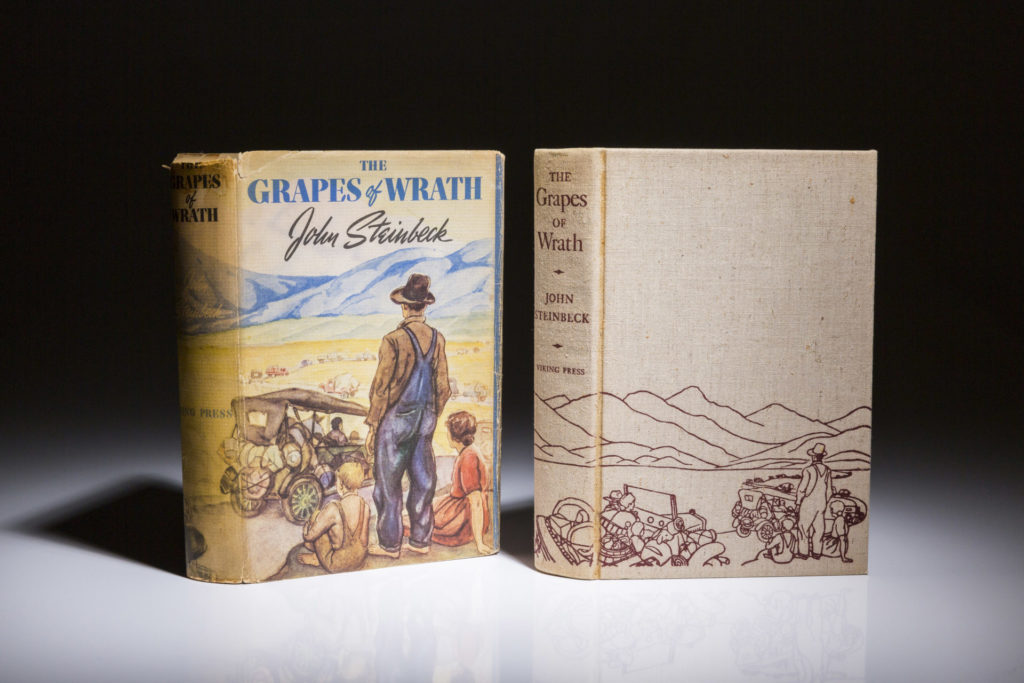 Pin
Pin Image from thefirstedition
John Steinbeck’s “The Grapes of Wrath,” published in 1939, is a profound narrative of the American experience during the Great Depression. Centered on the Joad family, who are displaced from their Oklahoma farm due to the Dust Bowl, the novel captures their arduous journey to California in search of a better life. The story unfolds against the backdrop of economic despair, highlighting the struggles faced by countless migrant families.
Steinbeck’s portrayal of poverty, injustice, and human resilience is both harrowing and inspiring. The Joads encounter exploitation and prejudice as they navigate a society that seems indifferent to their plight. However, their collective spirit illustrates the strength of community and solidarity amidst adversity. The famous phrase, “I’ll be there,” encapsulates the message of unity and shared humanity that runs throughout the novel.
Thematically, Steinbeck delves into the dignity of labor, the power of hope, and the struggle for social justice. The character of Ma Joad serves as the emotional anchor, embodying maternal strength and determination. Through her, Steinbeck emphasizes the importance of familial bonds and moral responsibility.
Steinbeck’s use of vivid imagery and poignant dialogue draws readers into the harsh realities of the time, making “The Grapes of Wrath” not just a story of survival, but also a powerful indictment of social inequities. Its impact continues to resonate, marking it as a critical work in American literature, poignantly reflecting resilience and compassion in the face of suffering.
17. "Little Women" by Louisa May Alcott
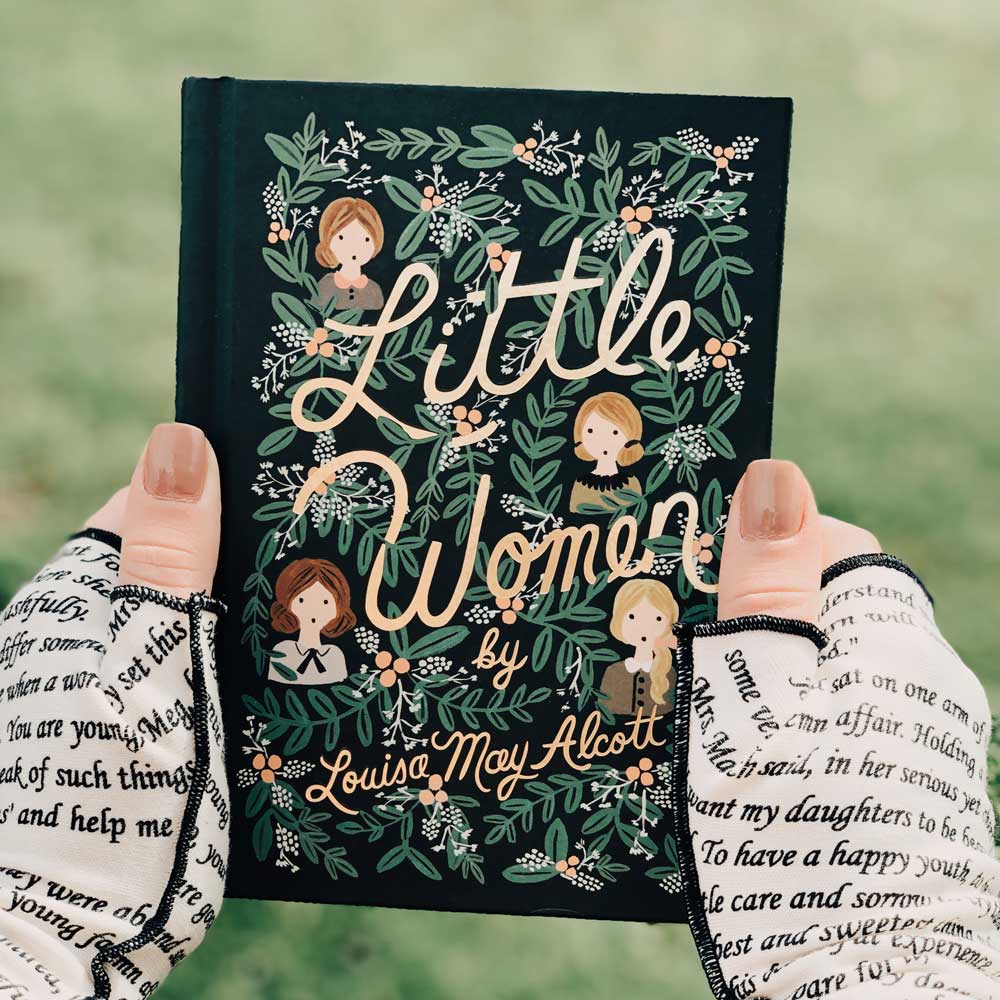 Pin
Pin Image from storiarts
“Little Women,” first published in 1868, is a novel that delves into the lives of the four March sisters—Meg, Jo, Beth, and Amy—growing up in Civil War-era America. The narrative is rich in themes of womanhood and familial love, set against a backdrop of societal expectations for women. The sisters’ distinct personalities symbolize various facets of womanhood: Meg embodies domesticity and motherhood, Jo epitomizes ambition and independence, Beth represents selflessness and gentleness, while Amy reflects artistic aspiration and vanity.
The novel intricately explores the challenges the sisters face, from economic hardships to personal aspirations. It critiques gender roles and the limitations placed on women during the 19th century, advocating for personal ambition and the pursuit of one’s dreams, as seen through Jo’s desire to become a writer. Alcott portrays the bonds of sisterhood that help the characters navigate their struggles, emphasizing the importance of love, loyalty, and support within a family.
Through moments of joy and sorrow, Alcott crafts a narrative that resonates with readers across generations, showcasing the journey toward self-discovery and independence. The book also highlights the moral and ethical dilemmas faced by the March sisters, making it a timeless reflection on the complexities of womanhood and personal identity.
18. "Fahrenheit 451" by Ray Bradbury
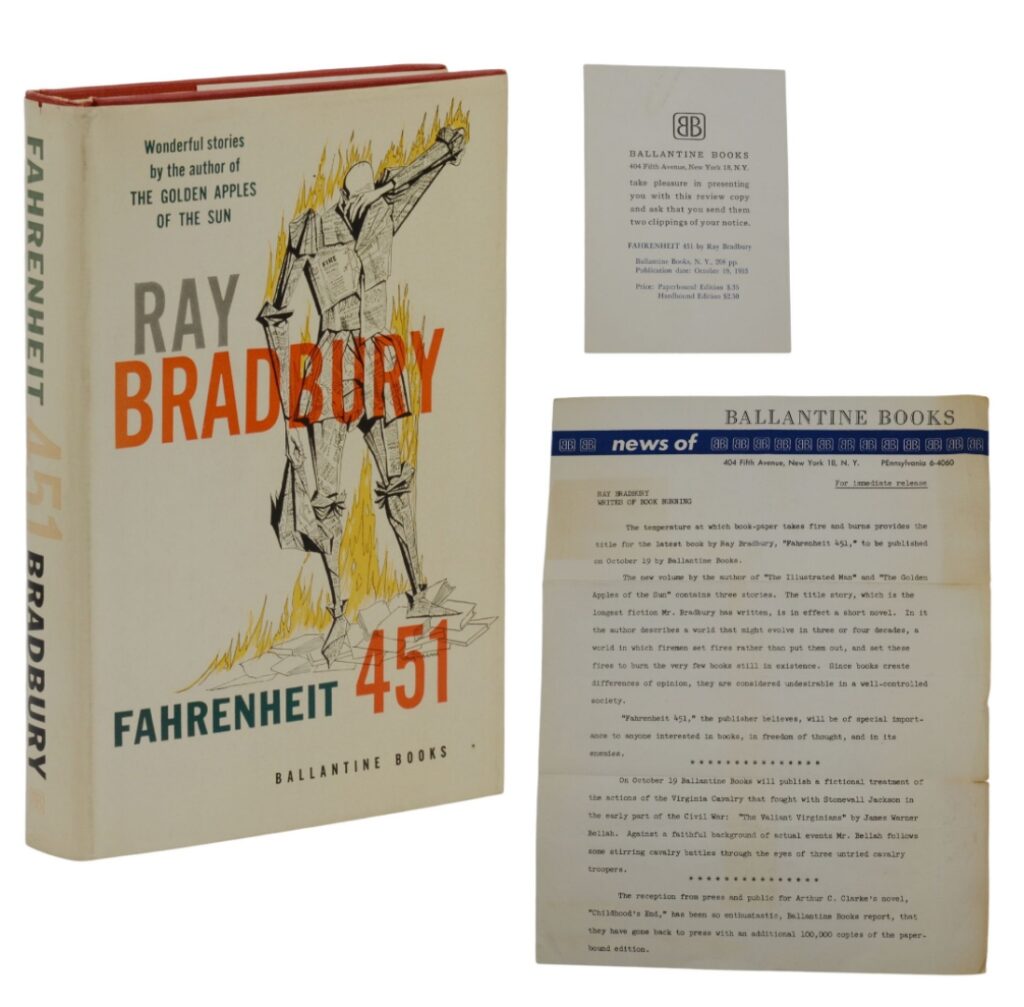 Pin
Pin Image from abebooks
“Fahrenheit 451,” published in 1953, presents a dystopian future where books are outlawed, and “firemen” are tasked with burning any that are found. The title refers to the temperature at which book paper supposedly catches fire, symbolizing the suppression of knowledge and critical thought. Ray Bradbury constructs a chilling society dominated by technology, where superficial entertainment aims to distract citizens from reality.
At the center of the narrative is Guy Montag, a fireman who initially embraces this oppressive regime. Montag’s gradual awakening occurs as he becomes disillusioned with the hollow existence of his peers, particularly through his encounters with his free-spirited neighbor, Clarisse, and a growing fascination with the forbidden literature. This transformation forces him to confront his role in a society that values conformity over individuality.
Bradbury’s novel serves as a cautionary tale about the consequences of censorship, the erosion of intellectual freedom, and the dangers of complacency. With a vivid portrayal of a world stripped of critical thought, “Fahrenheit 451” remains a powerful warning against the loss of knowledge, encouraging readers to cherish literature and the insights it offers. The themes of rebellion, the power of ideas, and the preservation of human connection are as relevant today as they were during Bradbury’s time.
19. "The Diary of a Young Girl" by Anne Frank
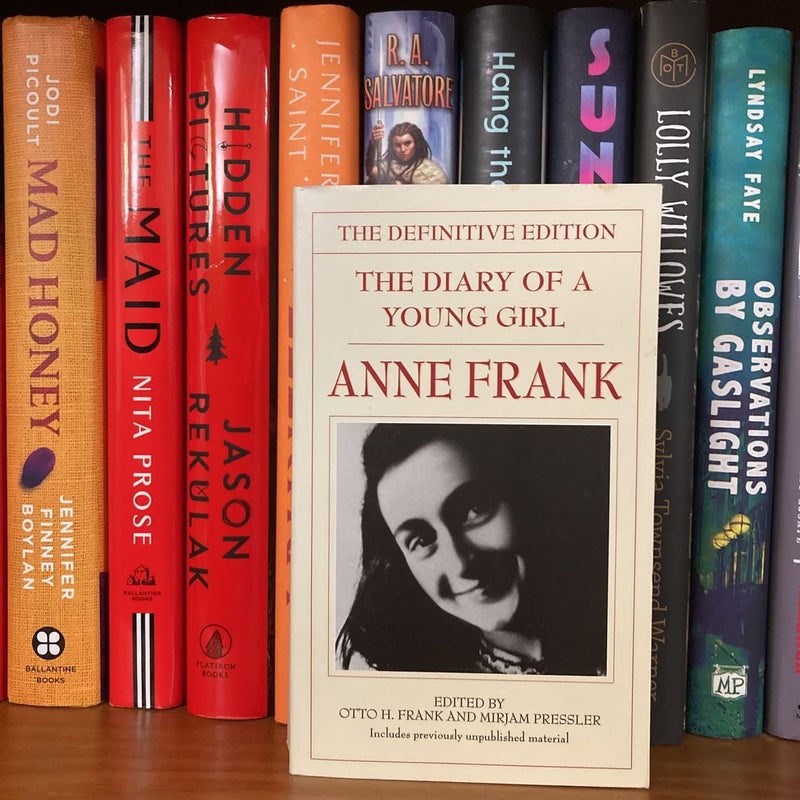 Pin
Pin Image from pangobooks
“The Diary of a Young Girl,” originally written in Dutch, is the poignant account of Anne Frank, a Jewish teenager who chronicled her life while hiding from the Nazis during World War II. Beginning in 1942, Anne receives a diary for her thirteenth birthday, which becomes her confidant as she navigates the challenges of adolescence amidst the harrowing backdrop of war. The diary captures her fears, dreams, and aspirations while documenting the stark realities of life in hiding, including the limitations imposed by war and the constant threat of discovery.
Anne’s sharp observations and introspective reflections reveal her maturity and depth. She writes candidly about her relationships with family members and others in hiding, detailing their struggles, conflicts, and moments of camaraderie. Despite the dire circumstances, her writing radiates hope and resilience. Anne dreams of becoming a writer, believing that sharing her story could foster understanding and promote peace.
The diary serves as a testament to the enduring human spirit. Anne’s ability to find beauty in small experiences—her love of nature, literature, and friendship—contrasts sharply with the horror surrounding her. Tragically, her life was cut short, but her words continue to resonate, making her one of the most poignant symbols of the Holocaust and a powerful reminder of the importance of tolerance and understanding.
20. "Wuthering Heights" by Emily Brontë
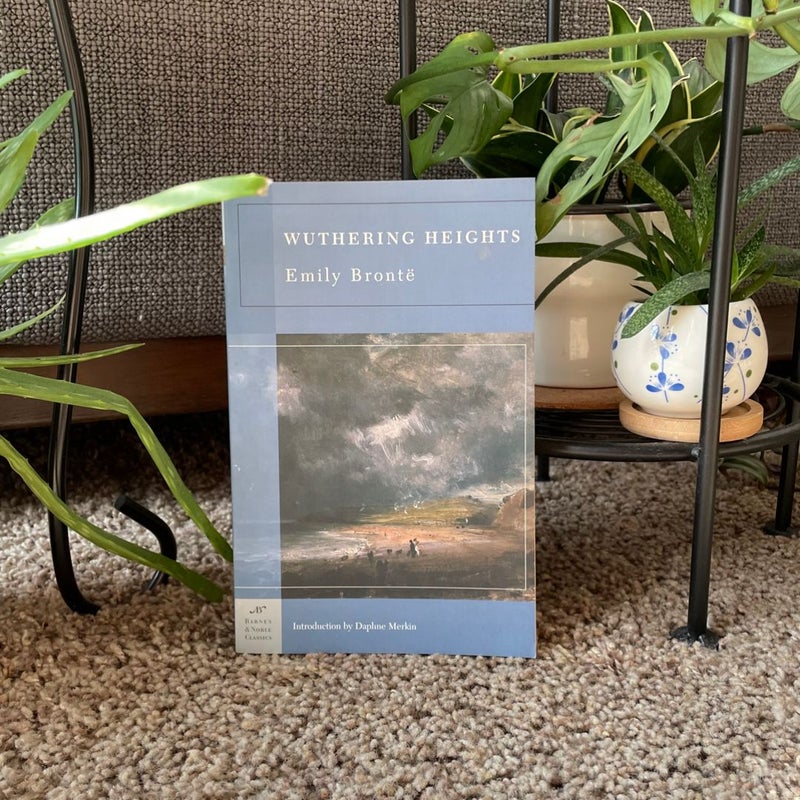 Pin
Pin Image from pangobooks
“Wuthering Heights,” published in 1847, is Emily Brontë’s only novel and a remarkable exploration of love, revenge, and the darker sides of human nature. Set on the windswept Yorkshire moors, the story revolves around the tumultuous relationship between Heathcliff, an orphan taken in by the Earnshaw family, and Catherine Earnshaw, the daughter of Mr. Earnshaw. Their bond is intense and passionate, yet marked by betrayal and vengeance as societal expectations and personal grudges fracture their connection.
The narrative unfolds through multiple perspectives, offering a complex view of characters driven by intense emotions. Heathcliff, both a tragic and villainous figure, embodies the themes of haunting love and deep-seated rage, particularly after Catherine marries Edgar Linton, which sparks Heathcliff’s desperate quest for retribution.
Brontë’s lyrical prose immerses readers in the moody landscape, enhancing the gothic atmosphere of the story. The moors become a reflection of the characters’ tumultuous emotions, while the supernatural elements underscore the powerful forces of love and revenge that drive the narrative.
Ultimately, “Wuthering Heights” explores themes of social class, morality, and the cyclical nature of suffering, highlighting how love can lead to both redemption and destruction, making it a timeless classic in English literature.
These top 20 famous books serve as vital mirrors reflecting the complexities of our society and the depths of individual experiences. Through their powerful narratives and thought-provoking themes, these authors challenge us to confront and engage with pressing societal issues and universal truths.
As essential reads, they offer invaluable insights, encouraging both seasoned bibliophiles and newcomers alike to explore the richness of the human condition. Engaging with these literary masterpieces not only enhances our appreciation for literature but also deepens our understanding of ourselves and the world around us.

































